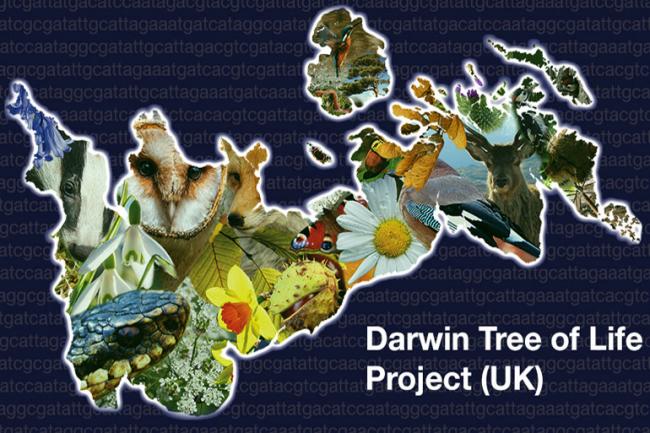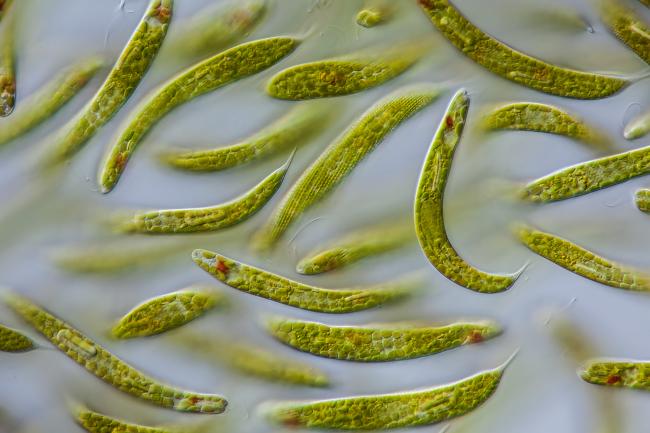The Biodiversity Genomics Europe (BGE) consortium brings together the continent’s key practitioners, including the Earlham Institute, in two fundamental DNA-based technologies - DNA barcoding and genome sequencing - to streamline the rollout of these methods across Europe.
The consortium believes the comprehensive application of genomic science to biodiversity research will fundamentally change conservation science and policy - with impacts predicted to be on a scale similar to those of the Human Genome Project in medicine.
An estimated one in four species on the planet are currently threatened with extinction, putting livelihoods, food supplies, and essential water and nutrient cycles at risk.
Our understanding of how life on Earth functions and responds to environmental pressures is far from complete, leaving the research community, industry, and policy makers woefully unprepared to reverse the steady loss of biodiversity and degradation of ecosystems.
Despite centuries of scientific research, an estimated 80% of the world’s species still await scientific discovery and description. Even for described species, telling them apart is often difficult. Complicating matters further, interactions within and among species, and between species and their environment, create a hugely complex picture from individual to planetary levels.
Genomics - an interdisciplinary field of science studying the structure, function, evolution, mapping, and editing of genomes - will provide crucial new tools to address these urgent global issues.
Genomic science is widely seen as one of the best hopes for success in mapping interdependencies and predicting how individuals and groups may respond to environmental change.
DNA barcoding uses short sequences of DNA to discriminate between species - in much the same way conventional barcodes distinguish products in a supermarket. With modern genetic sequencing techniques, DNA barcoding has the potential to dramatically accelerate the cataloguing of life on Earth, providing a basis for global conservation monitoring.
At the opposite end of the scale, genome sequencing determines the order of DNA nucleotides - the building blocks of the genetic code - throughout the entire genome of any given species. This enables scientists to identify and locate genes and other features of the genome, creating a comparative 'map' of the code that creates each organism.
An accurate genome sequence provides a clearer picture of how biological systems function and, crucially, how species respond and adapt to environmental change.
Europe at the forefront of genomics research
The EU’s Biodiversity Strategy for 2030 and the European Green Deal make clear commitments to address challenges such as pollinator decline, the deterioration of key terrestrial, freshwater and marine habitats, and the impact of invasive non-native species on biodiversity.
Co-funded by the European Commission, as well as the UK and Swiss governments, the €21 million BGE project represents the major investment in European genomic science needed to achieve these aims.
BGE’s project director, Dimitris Koureas, based at the Naturalis Biodiversity Center in the Netherlands, said: “We see BGE as a mechanism through which we can go out from the limitations of national investments that we already have in biodiversity genomics and into the European level.
“We are looking at BGE as a mechanism to build the economies of scope and scale that we need for the future.”
Rob Davey, Head of Research e-Infrastructure and Group Leader at the Earlham Institute, said: “The Earlham Institute’s central role in the Darwin Tree of Life project - the UK arm of the Earth Biogenome Project - has demonstrated the need for genomics and data science to revolutionise bioscience to address global challenges such as biodiversity loss. We bring this expertise to the BGE programme to collaborate and build a robust and transparent management system for the sample metadata and genomic data alongside our partners.
“The ability to store, share, and consistently record data across the partners is fundamental to the project’s success. We have already committed to developing the initial management workflows into our COPO data brokering platform through the ERGA Pilot project, and using this approach in BGE will enable standardised downstream data analysis for key reference genomes for the future, benefitting all areas of science and medicine.”
BGE will also collaborate with the Earth BioGenome Project in the USA and International Barcode of Life in Canada.
Pete Hollingsworth, Director of Science at the Royal Botanic Garden Edinburgh, said: “This vital European coalition brings together diverse expertise and infrastructure across two emerging technological streams using the power of DNA and genomic science to help understand and conserve biodiversity, providing the means to tackle some of the biggest challenges facing the planet today.”
Camila Mazzoni, research group leader at the Leibniz Institute for Zoo and Wildlife Research, said: “BGE bridges the identification and monitoring of coexisting species via barcoding and the understanding of the entire genetic make-up and adaptive capacity of each species via genomes.
“The steady buildup and connection of both types of information will bring an unprecedented comprehension of Earth’s biodiversity and the human actions towards its restoration.”








